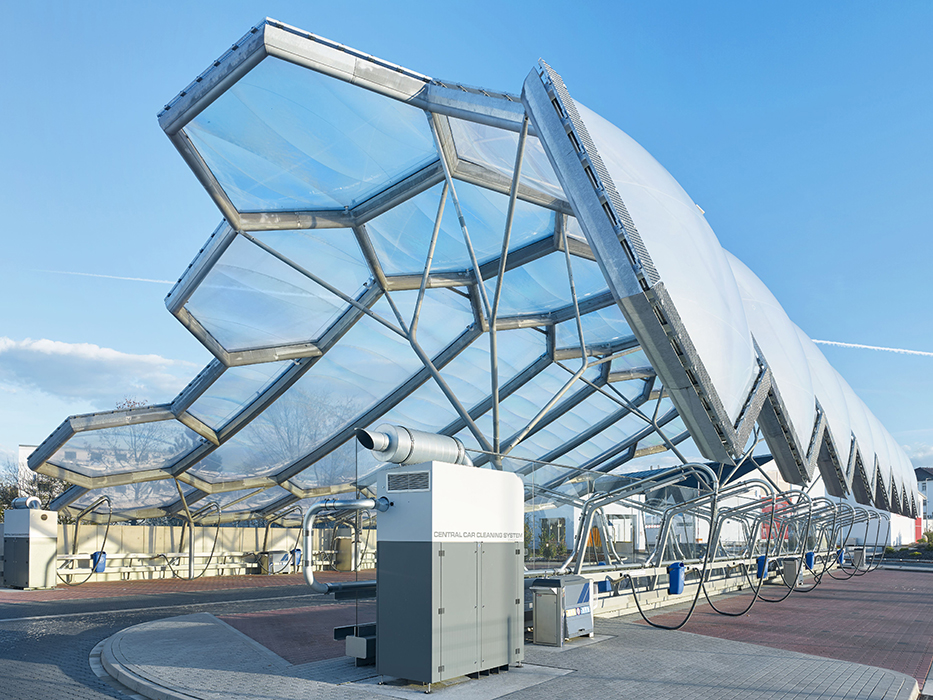In the world of architecture, gravity is often the primary force to contend with. Buildings are traditionally constructed from the ground up, using concrete and steel to anchor them to the Earth. However, there is a fascinating and unconventional subset of architecture that defies this convention – suspended architecture. This unique form of design challenges our preconceptions and allows architects to create structures that appear to float in mid-air. In this blog, we’ll explore the art and engineering of suspended architecture, where buildings soar above the ground with an almost otherworldly beauty.
Suspended Architecture: A Definition
Suspended architecture, also known as cantilever architecture, is an architectural style that involves extending portions of a building beyond its main support, creating the illusion of floating or defying gravity. This form of architecture often relies on structural engineering innovations to make it possible, and it challenges the conventional boundaries of design.
The Pioneers of Suspended Architecture
One of the most iconic examples of suspended architecture is Frank Lloyd Wright’s masterpiece, Fallingwater. Completed in 1937, this house is a prime example of cantilever design. It features balconies and terraces that jut out dramatically over a waterfall, giving the impression that the house is suspended in mid-air. Fallingwater showcases how architectural innovation can create harmony with the natural environment while redefining the relationship between a building and the landscape.
The Engineering Marvel of Suspended Architecture
Suspended architecture isn’t just about appearances; it’s about the art of defying gravity while ensuring the safety and stability of the structure. This requires an intricate understanding of structural engineering and the use of advanced materials.
One key engineering feature in many suspended structures is the cantilever, a horizontal beam anchored at only one end. It counterbalances the weight of the extended portion, allowing it to project out without collapsing. Modern materials like reinforced concrete and steel are often used to achieve this, enabling architects to create daring designs with large cantilevered sections.
Suspended Bridges: A Bridge to the Future
While buildings are the most common application of suspended architecture, it also plays a significant role in bridge design. Suspension bridges, for instance, utilize suspended architecture principles to create expansive spans. The Golden Gate Bridge in San Francisco and the Akashi Kaikyō Bridge in Japan are stellar examples of suspended bridges that challenge engineering limits and create breathtaking structures.
The Elegance of Contemporary Suspended Architecture
Contemporary architects have continued to push the boundaries of suspended architecture. One such example is the Marina Bay Sands resort in Singapore. This extraordinary hotel features an infinity pool suspended high above the city on a cantilevered platform, providing swimmers with an unparalleled view of the skyline. It’s a testament to modern engineering and the ambition of architects to create structures that are both functional and visually striking.

Art Meets Engineering in the Guggenheim Bilbao
The Guggenheim Museum in Bilbao, Spain, designed by Frank Gehry, exemplifies how suspended architecture can be both art and engineering marvel. The museum’s unique and organic design features sweeping curves and titanium-clad surfaces. The building appears to defy gravity, with sections that seemingly float above the ground. The Guggenheim Bilbao is not only an architectural masterpiece but also a symbol of how innovative design can transform a city and its cultural identity.
Challenges and Future Possibilities
While suspended architecture opens up exciting design possibilities, it also presents challenges. Architects and engineers must carefully consider the structural integrity of these designs, ensuring that they can withstand the forces of nature, including wind, earthquakes, and gravity itself.
As the field of suspended architecture continues to evolve, we can expect to see even more daring and innovative designs. This style of architecture challenges the limits of engineering and pushes the boundaries of what is possible in construction. From skyscrapers that defy gravity to bridges that span great distances, suspended architecture represents a fusion of art and science that continues to captivate our imagination.
Suspended architecture represents a departure from conventional building practices, offering a mesmerizing blend of art, engineering, and innovation. As architects and engineers continue to explore the possibilities of suspended structures, we can look forward to more breathtaking designs that seem to defy the laws of gravity. Whether in the form of awe-inspiring buildings or expansive bridges, suspended architecture stands as a testament to human creativity and our ability to transcend the limitations of traditional construction. So, the next time you encounter a cantilevered masterpiece, take a moment to appreciate the art and science that allow it to gracefully float above the earth.



















